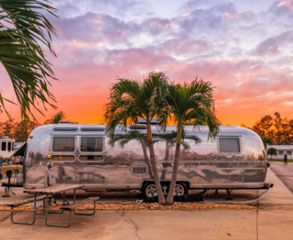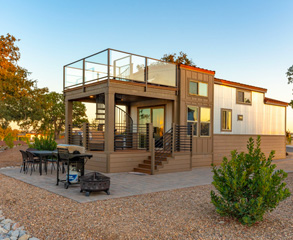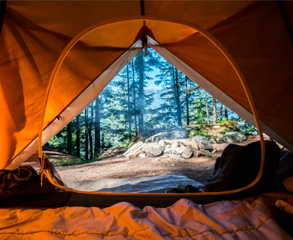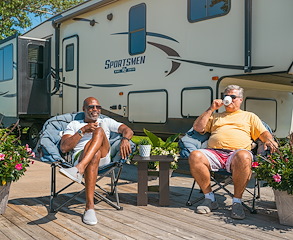Drive Safely This Season: Essential RV Tips for Winter Travel
As the cold weather tightens its grip on northern landscapes during the holidays, snowbirds prepare for their long RV drive down to warm winter destinations. To ensure your journey is safe and enjoyable, we're sharing four essential RV driving tips for traveling south or west during the busy holiday season.
1. Conduct a Pre-Trip Checklist
When it comes to packing for your RV trip, preparation is key. Creating a RV packing checklist can help ensure you have everything you need before you hit the road. Consider using an app like the RV Checklist App (Apple & Android) for a streamlined process, making it easier to check off items as you pack.
2. Check Your Tires for Winter Conditions
Tread Depth
Most RVs come with summer tires, which aren't ideal for winter driving. Before you migrate out of the cold, check your tire tread to ensure it can handle winter road conditions. If you frequently travel in snowy areas, consider replacing your summer tires with snow tires designed for better grip.
Tire Pressure
Don't forget to check your tire pressure before you depart! Cold temperatures can cause tire pressure to drop, affecting your RV's handling and stability. Proper tire pressure is crucial for safe cornering and braking, so ensure your tires are ready for the journey ahead.
3. Drive Slowly and Cautiously
While the excitement of escaping the cold is palpable, it's essential to drive slowly during the busy holiday season. The highways will be crowded with smaller vehicles, and winter conditions can make driving dangerous.
Improve Your Visibility
Invest in convex mirrors for your RV. These mirrors enhance your field of view and help eliminate blind spots, making your drive safer.
Know When to Pull Over
If weather conditions become challenging, it's perfectly okay to pull over at a rest area. Given the larger size of RVs, driving in high winds or on icy roads can be particularly hazardous. Prioritize your safety by waiting for the weather to improve.
4. Stay Alert with Regular Breaks
Long-distance RV driving can be exhausting, so it's crucial to stay alert. We recommend driving in six to seven-hour increments, followed by breaks to rest. This approach not only keeps you alert but also allows you to explore new areas along your route. Check out our list of Sun Outdoors resorts for potential stops on your journey if you need a break or roads are too snowy to travel.
We hope these RV driving tips prove helpful as you embark on your winter getaway. If you found this guide useful, share it with your friends on social media!
Related Posts









